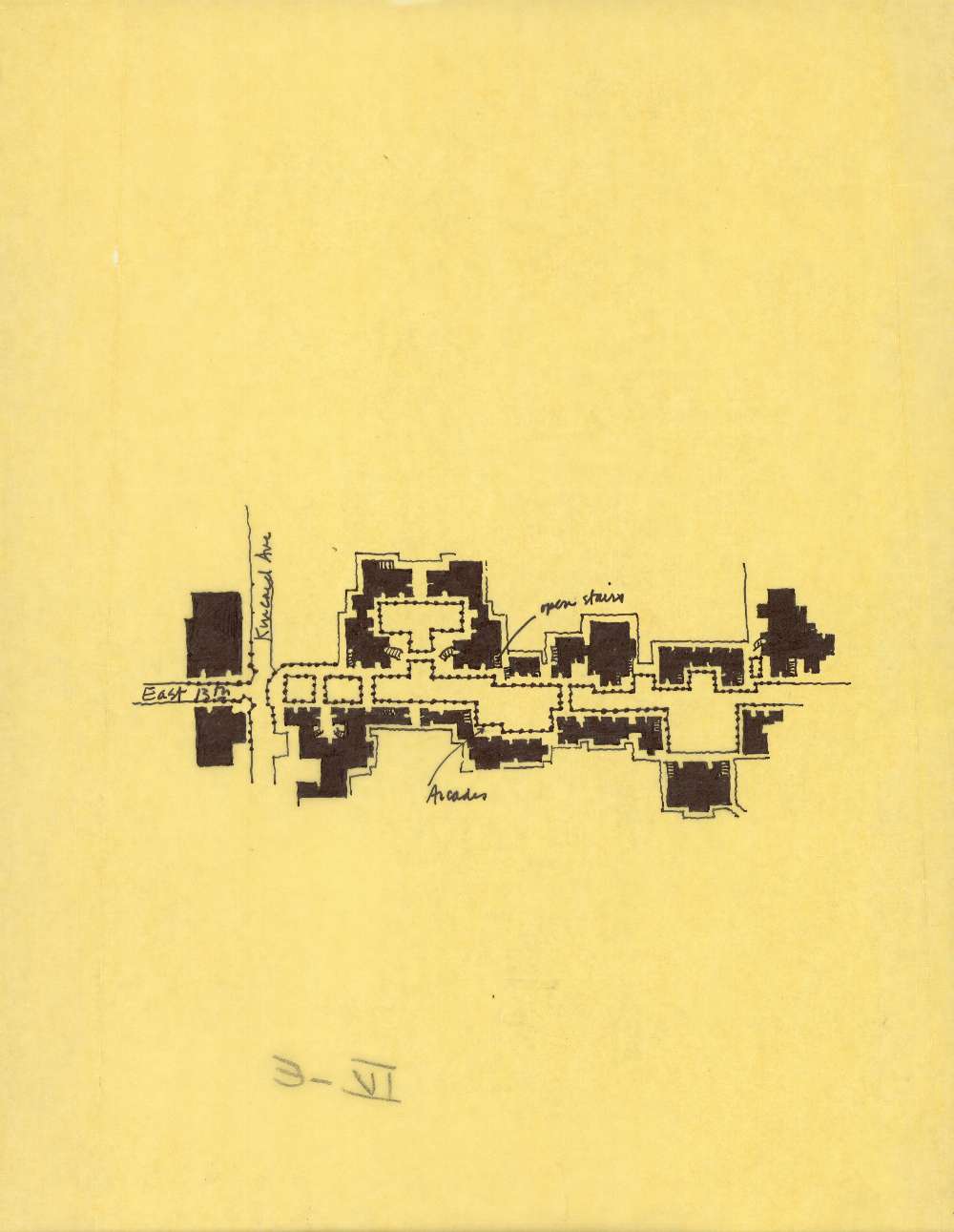
Master Plan for the University of Oregon: Sketches – Pattern “University Streets”
01/01/1971Schematic drawing of the “university street” pattern, illustrating the importance of concentrating the major university functions, like offices, labs, lecture halls, sports, student quarters, along university streets that are public and essentially pedestrian, 20 to 30 feet wide and with all the university activity opening off them.
References
-
Development of first Patterns and Pattern Languages
The first patterns were developed in 1967 by a group of people working together with Christopher Alexander in the Center for Environmental Structure. Between 1968 and 1976 the first pattern languages were developed and tested for particular projects undertaken by ...
-
Project Specific Pattern Languages - Specificity and Generality of Pattern Languages
A shared pattern language in a project acts as the generic system which gives the power to the smaller local acts to form a whole. Within the process of making a project, every individual act of building differentiates space. However, ...




 Go Back
Go Back